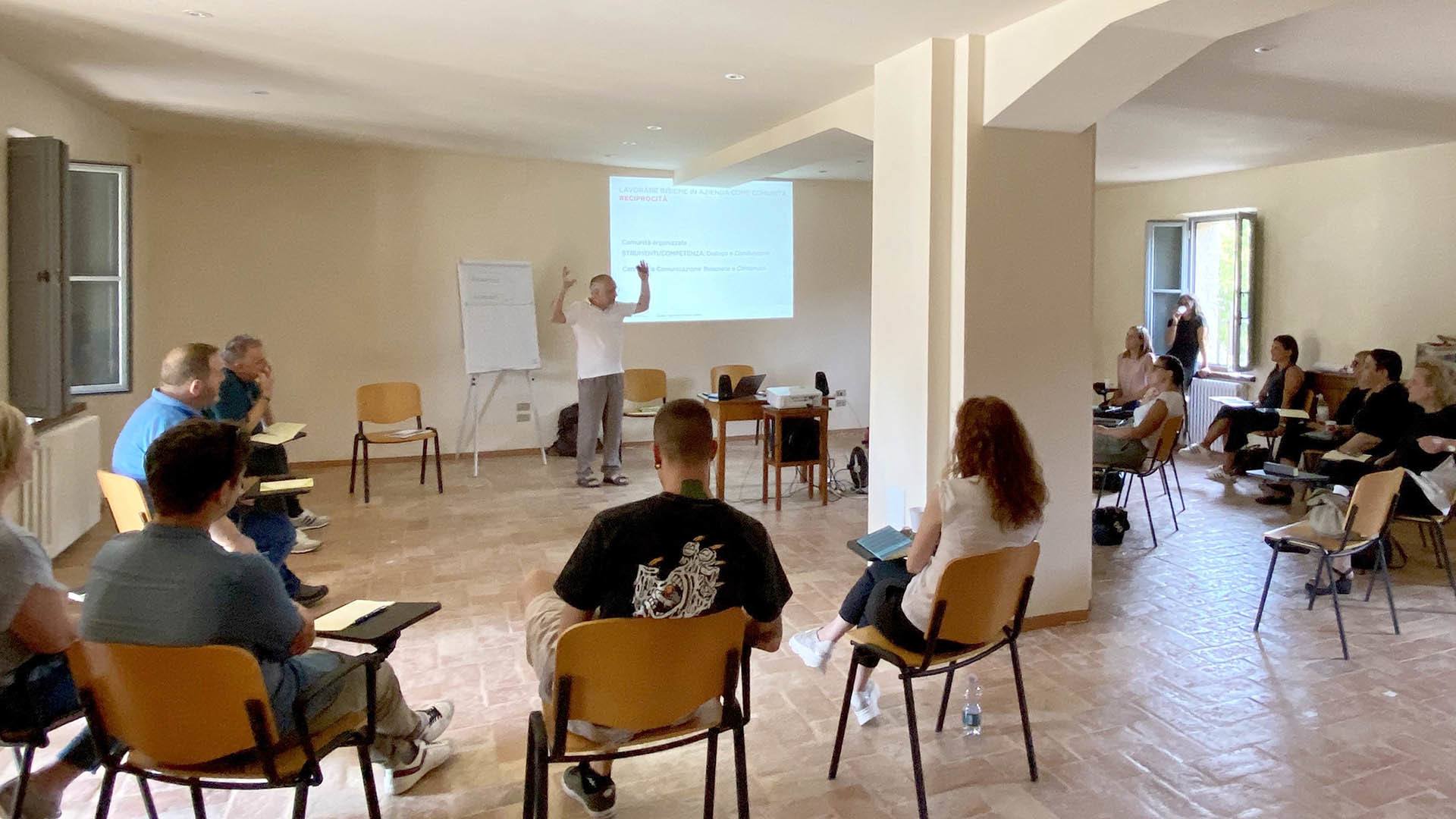I guess we have all been confronted with someone and had the feeling that they were not being straight with us, despite their reassuring words. And for sure we have all been told, at least once in our lives, to stay calm when in fact we had no intention – or even the slightest idea – of being angry or upset, but obviously something within us was communicating differently.
So what role does the information exchanged through our bodies play in our interactions? We will find out together in this article.

Photo Laura Adai on UnSpalsh
Communication is a multimodal phenomenon
Freud once claimed that the whole body, to be precise “every pore”, is capable of revealing what is kept hidden by the mouth.
Mehrabian, in a study that we cite in all our communication and interpersonal relationship courses, also emphasized the preponderance of non-verbal communication (i.e. the use of the body) and para-verbal communication (i.e. the use of the voice) over words in any communicative exchange.
Human communication takes place on several levels simultaneously, and both the verbal and non-verbal aspects that characterize the exchange participate in the construction of the meaning within the communicative process.
The study of non-verbal communication is called kinesics, derived from the Greek word κίνησις , meaning motion. It concerns all these movements and actions that transmit, in a more or less conscious way on the part of the subject, a visual signal to an observer.
If the verbal language is based on a conventional system of signs encoded according to precise grammatical and syntactic rules, the coding of the non- verbal language is not as structured as it depends on many factors: the characteristics of each person, the context in which the interaction takes place, the different meanings attributed to non-verbal signs in the various cultures.
The various elements of body language
Non-verbal communication includes a wide range of kinesic signals (which are related to movement) and paralinguistic signals (which are linked to voice and intonation) – each of which perform very specific functions. Let’s analyze the main ones:
The external appearance is given by physical shape and clothing. In particular the latter plays an important role as it influences first impressions and the perception of a person’s image in the eyes of his/her interlocutors. It also allows us to show a very specific identity and social role to other people and to ourselves.

Photo Ben Rosset on UnSpalsh
Let’s think, for example, of uniforms or of the various types of clothing we wear depending on the contexts in which we interact.
It is therefore important to dress with awareness, asking ourselves “What image do I want to give of myself to the people I’m going to meet?”
Now let’s see how behaviour in space works. The way we move in the surrounding space, our proximity or distance from other people are a significant indicator from a social point of view: they tell us a lot about the relationship between the interlocutors and the roles they play. Proxemics (a term proposed by Hall in the late 1960s) studies the use that individuals make of space. It is interesting to note how our “border” does not coincide with that of our body and that there is a sort of invisible bubble (the so called proxemic egg) that surrounds us and determines our personal space. This bubble changes according to our culture of origin. In the closest and most intimate relationships, we allow the other person to cancel the distance and enter our private space; in friendship relationships, the distance between us and the other person already increases by at least 50 cm. Social distance is what we keep in professional, formal and impersonal relationships. Finally, public distance, the one that exceeds 3 metres, concerns situations such as meetings or conferences where the interlocutors are far from the speaker and the feedback is collected mainly through sight.
This information is useful to create empathy with the people around us: being too close or too distant, depending on our interlocutor, is an aspect that can determine the effectiveness or failure of the communication in progress.

The set of our body movements determines our kinesic behaviour. This includes our chest and legs, hand gestures, arm and head movements. Of all the non-verbal signals, these are the ones which are most influenced by culture and social context (talking about gestures, think for example of the evident difference between us Italians and people belonging to the Anglo-Saxon culture).
What is important to observe during the interaction is whether this system of movements is aligned with what the person is expressing in words.
Consistency vs lie
The congruence between verbal and non-verbal generates credibility when the gestures and the movements of the head support and reinforce what is being said in words.
Facial expressions and gaze are the privileged signals in the communicative exchange. Just think, for example, of the strength conveyed by a person who can hold our gaze compared to the effect we get from shifty eyes or the lack of eye contact while we are communicating. I am fascinated by the fact that basic emotions are transmitted through the face in a universal way, that is
regardless of the culture we can recognize sadness or joy, anger or fear.

Photo by Engin Akyurt on UnSplash
These kinds of non-verbal signals are spontaneous and difficult to conceal or fake, which is why a careful observer can easily recognize a lie (this is the focus of the TV series Lie to me). When we have the feeling that the other person is not telling the truth, we are detecting – more or less consciously – an inconsistency between the verbal and non-verbal messagges. For example, if a person with a very upright posture, a furrowed forehead, rapid breathing and a fixed gaze tells us “I’m calm!”, what we really perceive is a hidden anger that is ready to explode. The voice will also carry this underlying message as it is very difficult to control when in an altered emotional state.
The message, i.e. what the speaker really means, is mainly conveyed by the non-verbal level of communication.
This is why we insist so much on the importance of observation and on the attention to voice and body details, that allow us to collect as much information as possible about the people we are interacting with, giving us the opportunity to guide the conversation towards a pleasant and empathic exchange through questions and active listening.
| partem claram semper aspice |
The photos used - where not owned by the editorial team or our guests - are purchased on Adobe Stock and IStockPhoto or downloaded from platforms such as UnSplash or Pexels.
Did you like this post and want to learn more about the topics?
Passodue research on issues related to sales, marketing, ethics and the centrality of human beings within the market logic, officially started in 2012. The results derived from our work are described in the publications and in the books you can find in this section.





This Post Has 0 Comments